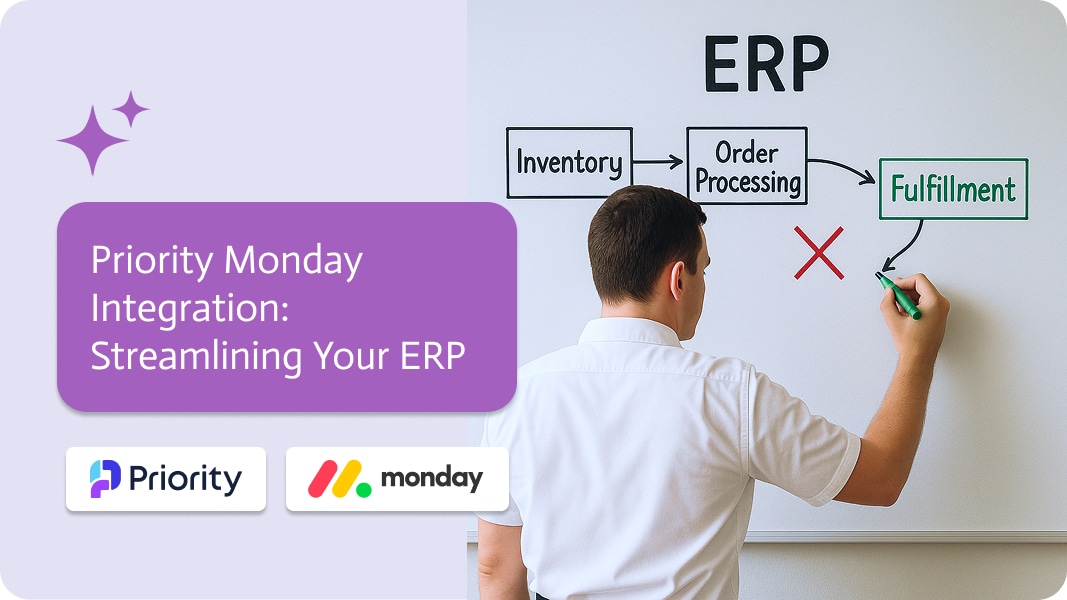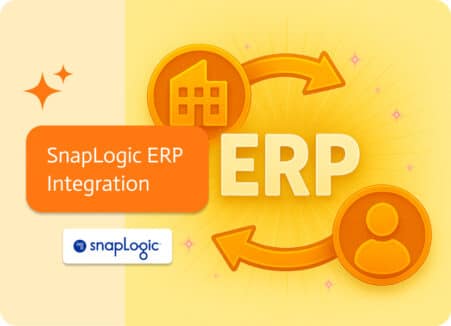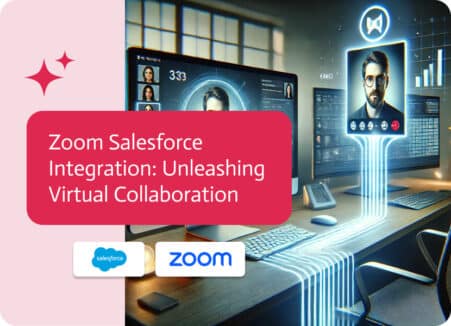

Priority Monday Integration: Streamlining Your ERP
Priority monday.com Integration refers to the seamless connection between Priority, a comprehensive cloud-based ERP system, and monday.com, a leading Work OS and project management platform. This integration is designed to unify business operations—linking structured financial and inventory data with collaborative task management and team execution—so that companies can operate with greater visibility, agility, and efficiency.
For organizations that rely on both systems, connecting Priority and monday.com eliminates the need for manual data re-entry, reduces operational friction, and creates a consistent, real-time data layer across project execution, task tracking, procurement, finance, and operations. The result? Shorter lead times, faster decision-making, and more accountable, cross-functional teams.
Why Priority–monday.com Integration Matters
In today’s fast-moving business landscape, the disconnect between execution tools like monday.com and core ERP systems like Priority can lead to missed deadlines, duplicated work, and costly communication breakdowns. Without integration, financial teams work in isolation from operations, and project teams often lack insight into inventory status, order approvals, or vendor availability.
By integrating Priority with monday.com, businesses bridge the gap between planning and doing. Task boards and automations in monday.com can trigger workflows in Priority, such as purchase orders or inventory checks—while Priority data, like supplier status or delivery timelines, can be displayed directly in relevant monday boards. This bi-directional flow ensures everyone—from procurement to finance to project teams—is working from the same live dataset.
Key Benefits of Priority–monday.com Integration
1. Real-Time Operational Sync
Workflows that begin in monday.com—like procurement requests or production updates—can trigger real-time actions in Priority. Likewise, changes in Priority—such as approval statuses, invoice updates, or stock level changes—can instantly update monday boards.
Example: A project manager submits a request for raw materials in monday.com. The integration automatically generates a purchase requisition in Priority, checks vendor lead times, and updates the monday board with expected delivery dates—all without manual input.
2. Unified Task and Financial Visibility
The integration brings financial and operational visibility into the same workspace. Project owners can see budget usage, invoice statuses, or approval bottlenecks directly within monday.com—without switching tools or relying on back-and-forth emails.
This transparency enables better planning, faster approvals, and more accurate project costing and forecasting.
3. Automated Procurement and Inventory Updates
Instead of managing procurement in spreadsheets or separate systems, teams can initiate and track procurement workflows directly within monday.com. Once an order is approved, Priority handles vendor communication, stock reservations, and payment processing—then updates the monday board automatically.
This reduces manual handovers, prevents duplicate data entry, and streamlines inventory operations.
4. Improved Accountability and Collaboration
With every team working from the same source of truth, accountability increases. Financial approvals, delivery status, project timelines, and procurement tasks are all tracked in context—reducing the risk of missed deadlines or unapproved expenses.
Common Integration Challenges (and How to Solve Them)
1. Data Mapping Between Platforms
monday.com uses flexible, customizable columns and boards, while Priority has a structured database with predefined fields. Mapping between these two formats can be complex.
Solution: Integration platforms like Noca AI offer smart field matching, AI-based column recognition, and dynamic data transformation to ensure seamless data flow between the systems.
2. Permissions and Access Controls
Integrating ERP data into project management systems raises questions about who should see what—especially when dealing with sensitive financial data.
Solution: Use a platform that supports granular permission mapping and role-based access controls, ensuring the right people see the right data at the right time.
3. Change Management and User Training
New workflows that span monday and Priority may be unfamiliar to users.
Solution: Provide clear, role-specific training and in-platform guidance. Let users interact with the new integration step by step, starting with high-impact automations and expanding over time.
Final Thoughts
Priority monday.com Integration transforms disconnected project planning and operational execution into a unified, real-time system that drives efficiency, accountability, and growth. Whether you’re managing supply chains, complex projects, procurement, or financial workflows, this integration ensures your teams work smarter—with fewer handoffs and greater clarity.
By automating repetitive tasks, connecting live data sources, and centralizing approvals and insights, the integration empowers teams to focus on what matters: execution, strategy, and delivering results.
Platforms like Noca AI make this connection fast, secure, and easy to manage—offering no-code mapping tools, prebuilt templates, and AI-powered automations tailored for ERP and work management environments.
Q&A: Frequently Asked Questions
Q1: What is Priority–monday.com Integration?
It’s the process of connecting Priority ERP with monday.com to synchronize tasks, financial data, inventory updates, and approvals—enabling real-time operational visibility and process automation.
Q2: Who benefits from this integration?
Operations, finance, procurement, and project management teams all benefit from shared data, fewer manual processes, and more accurate insights across the business.
Q3: Can it handle complex workflows like approvals or custom fields?
Yes. With the right integration platform, you can map complex logic, support custom fields, and build automations that span both systems—without writing code.
Q4: Is it secure?
Absolutely. Solutions like Noca AI use enterprise-grade encryption, audit logs, and permission controls to ensure sensitive data remains protected and compliant.
Q5: How do I get started?
The easiest way is to use an iPaaS solution like Noca AI. You can start with a few high-impact automations—like syncing purchase orders or displaying invoice statuses in monday.com—and scale from there.


